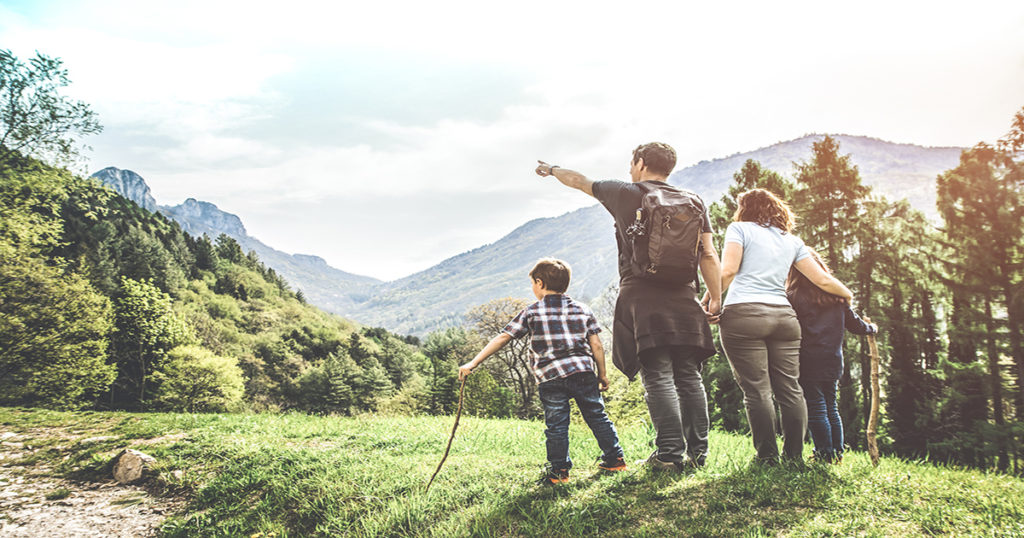Spring is in the air and with warmer temperatures, longer days, and the promise of summer around the corner, many people are looking to get outside to enjoy the season. One of the perks of frequent relocation that many military families cite is the opportunity to live in different places with varying climates, geography, and attractions.
Getting out to explore outdoor areas nearby can be a great way to acclimate to a new duty station. Whether you are a seasoned outdoor enthusiast or someone who is looking to up your outdoor game, below are tips on how to discover the best parks and activities they offer.
National Parks
According to The National Park Foundation, “The National Park System encompasses 423 national park sites in the United States. They span across more than 84 million acres, with parks in each state and extending into the territories, including parks in Puerto Rico, the Virgin Islands, American Samoa, and Guam.” Chances are no matter where you live, you are within a short driving distance of a national park.
If you have kids, one fun way to discover and enjoy National Parks is to get your kids interested in the Junior Ranger Program. Typically geared for kids ages 5-13, the Junior Ranger Program offers education activities that include map skills, immersive tours, and activities for the whole family to complete when visiting a park. Kids can earn and collect badges from each place. What a fun way to document your experience.
In partnership with Operation Live Well, the National Park Foundation offers free entrance to the National Parks under the Interagency Annual Military Pass providing free entrance to national parks and other federal recreation areas to current U.S. military members and their dependents, U.S. military veterans, and Gold Star Families.
State Parks
Another great way to discover the best parks and what they have to offer is to seek out adventure at the state parks where you live. Like the National Park System, many states also allow military members and their families free admission or even discounted rates for activities like cabin or campsite rental.
State parks can not only offer a great outdoor escape for hiking, biking, or relaxation, but they also offer opportunities for education and insight into the particular history and landscape of a geographical area. They often share space with major lakes, rivers, or mountain ranges.
Most states have robust websites that will not only help to direct you to all of the parks within the state, but also include great information about the activities and events offered at each one and places to stay or eat nearby. Whether you’re into boating, rock climbing, waterfalls, or camping, state parks usually offer these activities at a minimal cost to visitors. Find Your Park is a great place to start your planning. It allows you to filter your search by state, zip code, or activity.
Local Parks
If getting out to visit large national parks or exploring within your state feels too overwhelming, consider taking advantage of your local parks. Whether you are simply looking for a place to run your weekly miles, a pet-friendly area to walk your dog, or a nearby playground where kids can roam, find your nearest local park.
A great way to discover local parks is to simply ask around others in your community where they love to play and enjoy outdoor recreation. Trip Advisor has a “nearby” feature where you can search for parks and outdoor attractions. The Trust for Public Land along with the National Parks and Recreation Service have partnered together with an initiative to ensure that by 2050, all United States residents will be within a ten-minute walk of an outdoor park.
A Final Word
From the ASLA: “The idea that spending time in nature can make you feel better is intuitive. We all feel this to be true, and many of us have anecdotes of our own or from friends or family that support that idea. People who have been suffering from stress, sickness, or a trauma can spend quiet contemplative time in gardens or taken to the mountains or woods to heal. But nature is not just wilderness. The benefits of nature can also be found in our communities’ parks and green spaces.”



